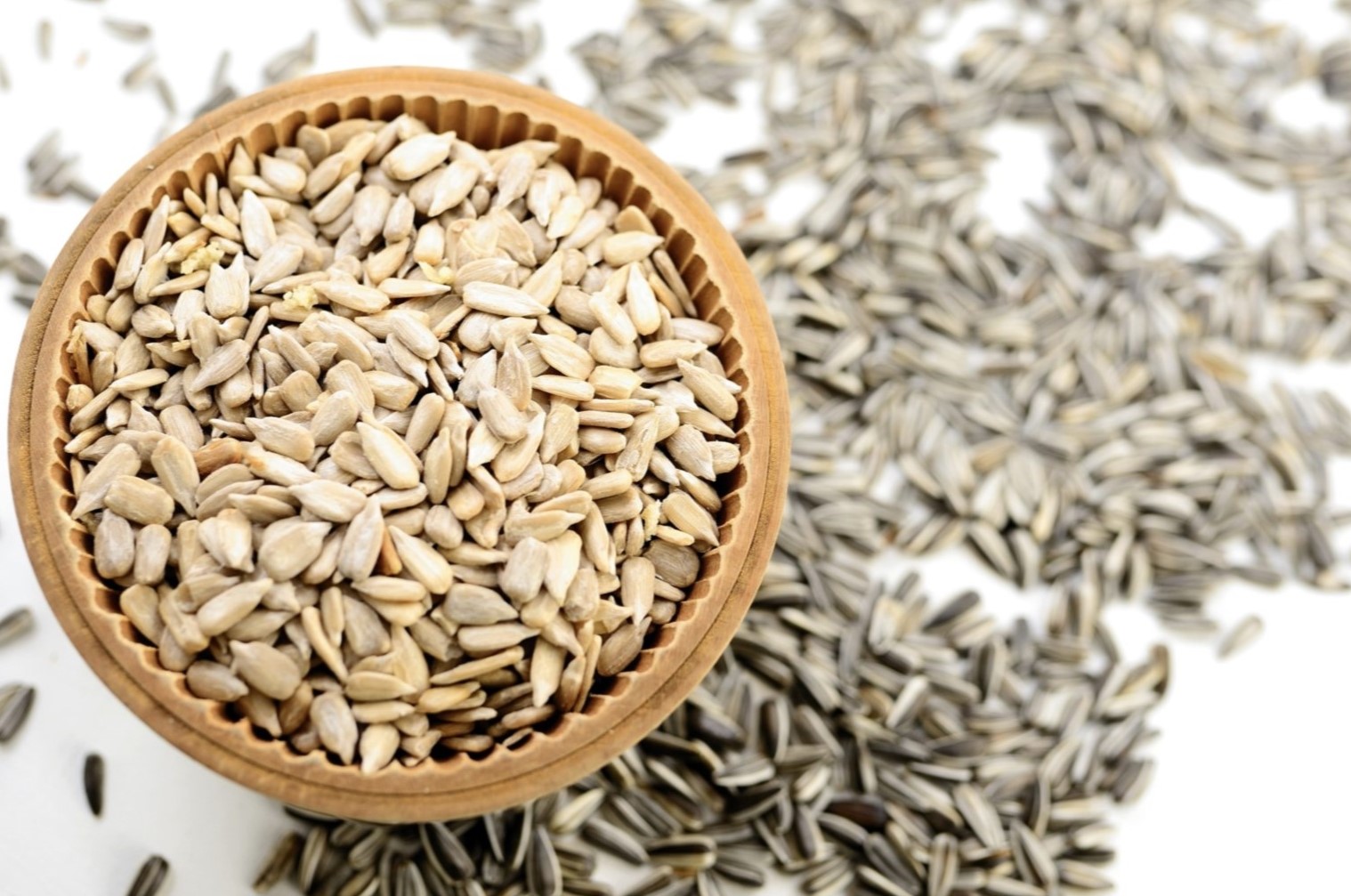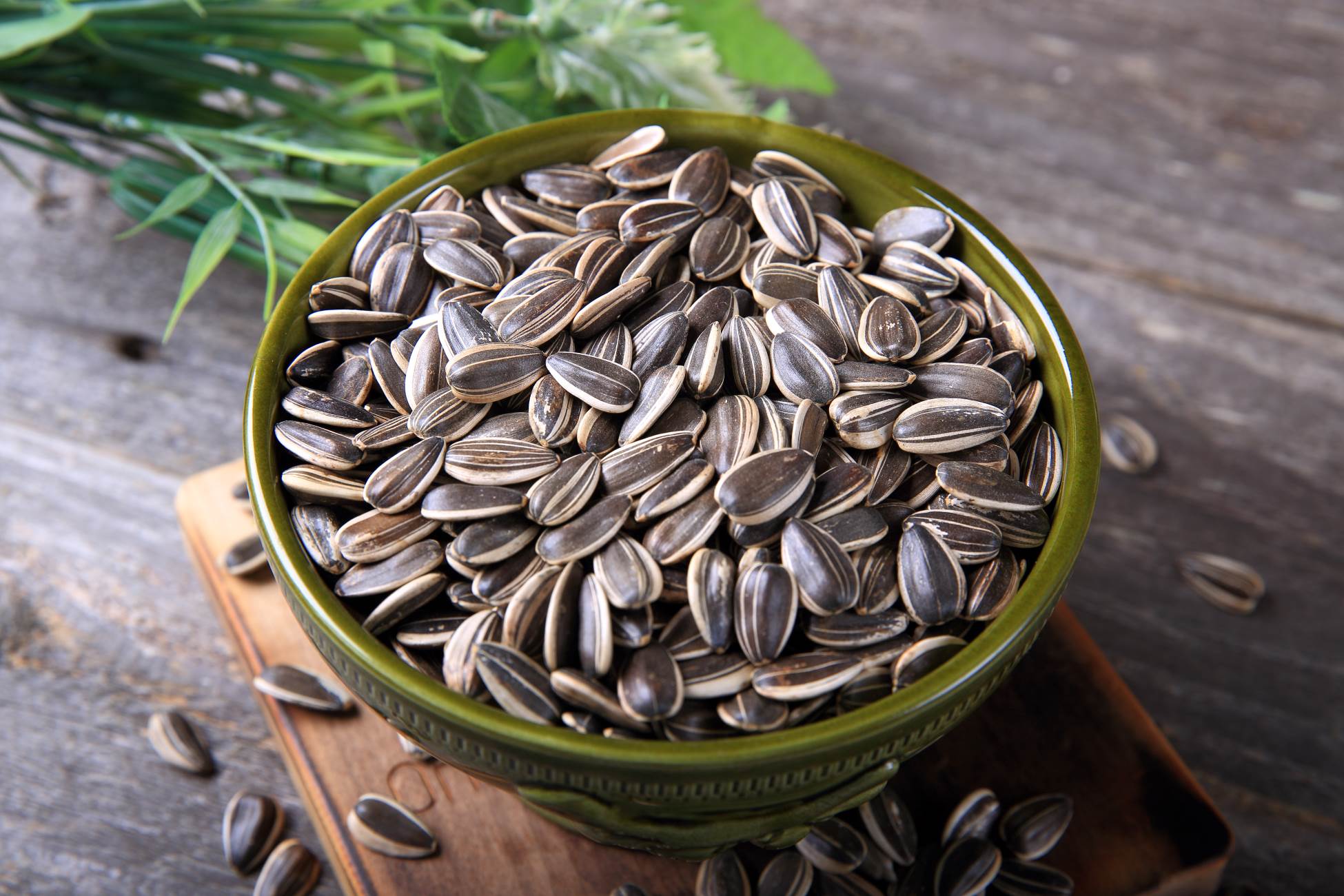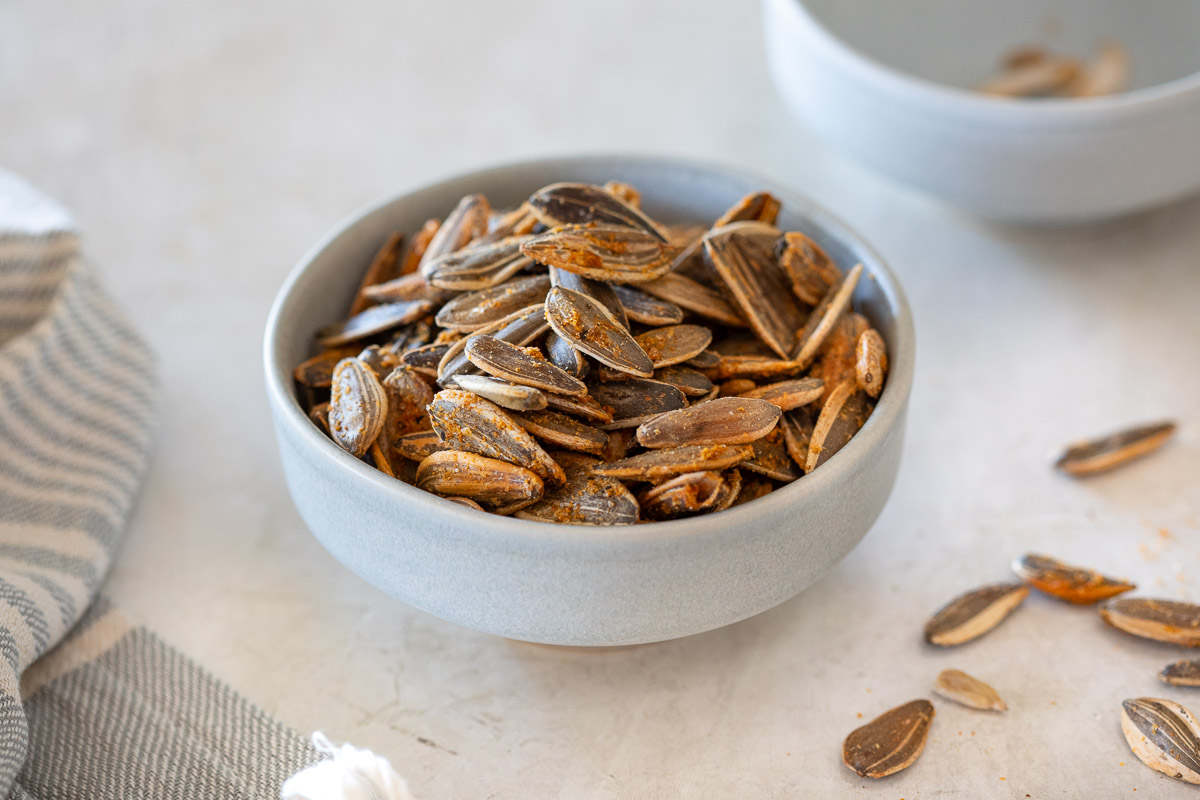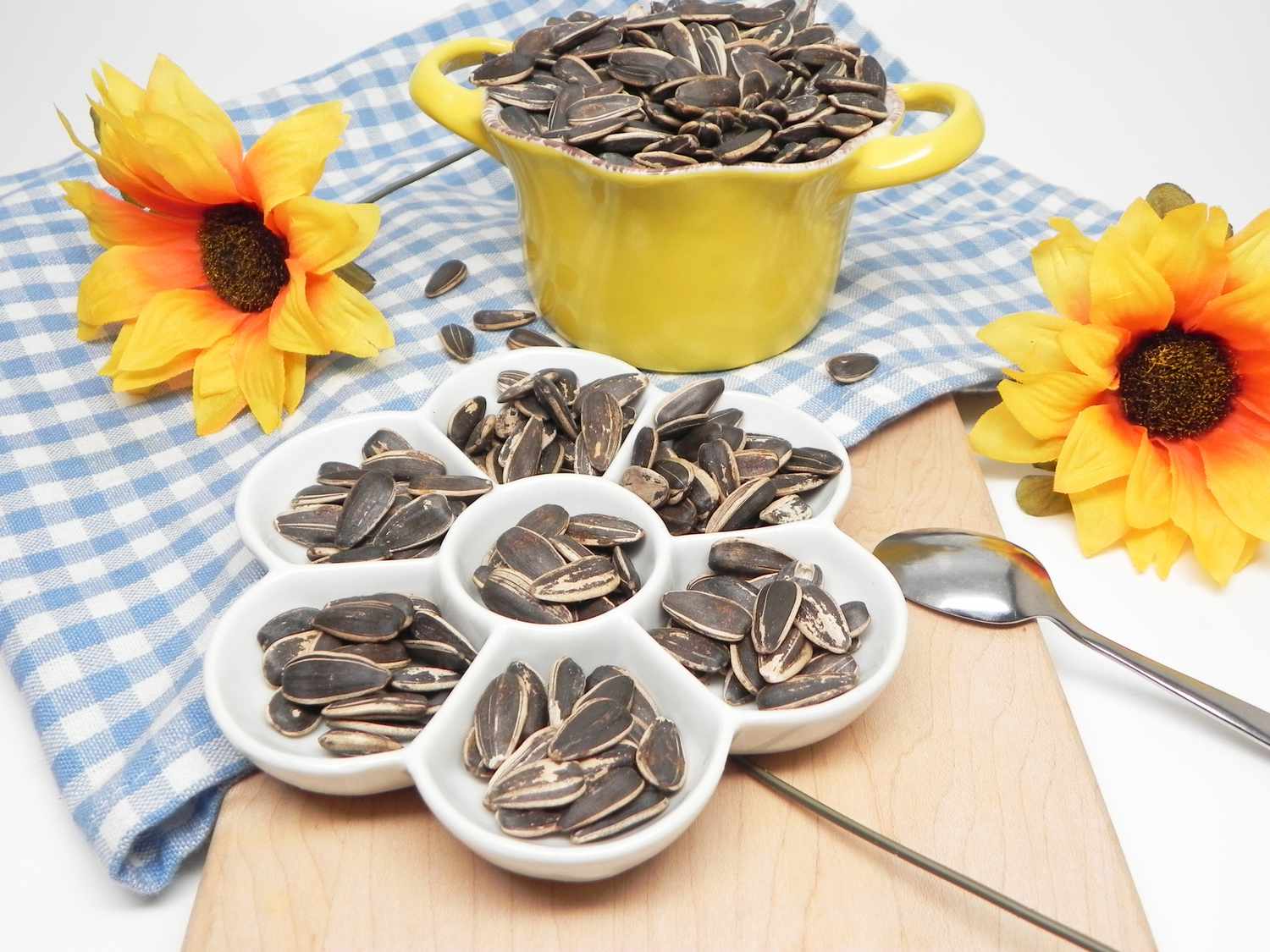Home>Garden Essentials>How To Know If Sunflower Seeds Are Bad


Garden Essentials
How To Know If Sunflower Seeds Are Bad
Modified: August 16, 2024
Learn how to determine if sunflower seeds in your garden are spoiled or not. Find out the signs of bad sunflower seeds and how to ensure their freshness.
(Many of the links in this article redirect to a specific reviewed product. Your purchase of these products through affiliate links helps to generate commission for Storables.com, at no extra cost. Learn more)
Introduction
Gardening enthusiasts and nature lovers alike appreciate the beauty and versatility of sunflowers. From their vibrant yellow petals to their towering stalks, these iconic plants bring joy and a touch of nature to any garden or landscape. But did you know that sunflowers also produce seeds that are not only delicious but also incredibly nutritious?
Sunflower seeds are packed with essential nutrients, including healthy fats, protein, fiber, and a range of vitamins and minerals. They make for a tasty and convenient snack, whether eaten on their own or incorporated into a variety of recipes. However, just like any other food product, sunflower seeds have a shelf life, and it’s important to know when they have gone bad. Consuming rancid or spoiled sunflower seeds can lead to food poisoning and digestive discomfort.
In this article, we will delve into the topic of identifying bad sunflower seeds. By understanding the signs of spoilage, you can ensure that the sunflower seeds you consume are fresh, safe, and delicious. Let’s explore some key indicators that can help you determine if your sunflower seeds have passed their prime.
Key Takeaways:
- Don’t eat sunflower seeds that smell bad, look shriveled, taste off, or have mold. Proper storage keeps them fresh and safe to snack on!
- Use your senses to check sunflower seeds for spoilage. Look for mold, smell for rancidity, and taste for freshness. Store them properly for longer shelf life.
Read more: Why Are Sunflower Seeds Bad For You
Understanding Sunflower Seeds
Before we delve into identifying bad sunflower seeds, it’s important to have a basic understanding of what they are and how they are typically consumed.
Sunflower seeds are the fruit of the sunflower plant, scientifically known as Helianthus annuus. These small, oval-shaped seeds are encased in a hard and outer shell, which is typically removed before consumption. They can be consumed in various ways, including as a snack, added to baked goods, or used as a topping for salads and other dishes.
What makes sunflower seeds particularly desirable is their impressive nutritional profile. They are an excellent source of healthy fats, primarily monounsaturated and polyunsaturated fats, which are known to support heart health. They are also rich in protein, dietary fiber, and micronutrients such as Vitamin E, phosphorus, magnesium, and copper.
Sunflower seeds come in two main varieties: the traditional black or black-striped seeds and the hulled or shell-free seeds. The black-striped seeds have a thick and tough outer shell that needs to be cracked open to access the edible portion. On the other hand, hulled sunflower seeds have had their shells removed, making them easier to eat.
Whether you prefer the traditional seeds or opt for the convenience of hulled seeds, ensuring their freshness and quality is vital to maximize their nutritional benefits and enjoy their delicious flavor.
Signs of Bad Sunflower Seeds
Knowing how to recognize the signs of bad sunflower seeds is crucial for maintaining your health and enjoying the best taste experience. Here are a few key indicators to look out for:
- Smell test: One of the easiest ways to determine if sunflower seeds have gone bad is to give them a good sniff. Fresh sunflower seeds have a distinct nutty aroma. If you notice a rancid or foul smell, it’s a clear indication that the seeds have spoiled and should be discarded.
- Visual inspection: Take a close look at the sunflower seeds. Good-quality seeds should appear plump, even in size, and have a uniform color. If you notice shriveled or shrunken seeds, or if they have become discolored or have dark spots, it’s a sign that they may be spoiled.
- Taste test: While it may seem obvious, tasting a small portion of the sunflower seeds can help determine if they are still fresh. Fresh sunflower seeds should have a crunchy texture and a pleasant, nutty flavor. If they taste stale, bitter, or have an off-putting flavor, it’s best to discard them.
- Mold and discoloration: A visual cue of spoiled sunflower seeds is the presence of mold or a fuzzy appearance. Mold can develop on the seeds if they have been exposed to moisture or stored in improper conditions. If you notice any signs of mold or significant discoloration, it is a clear indication that the seeds have gone bad.
- Rancidity: Sunflower seeds contain natural oils that can turn rancid over time. Rancid sunflower seeds have a stale, sour, or unpleasant taste. If your sunflower seeds taste off or have a rancid smell, it’s a sign that they have surpassed their freshness and should be discarded.
It’s important to note that even if your sunflower seeds show no signs of spoilage, it’s still essential to store them properly. To maintain their freshness, store sunflower seeds in an airtight container in a cool, dry place away from direct sunlight and moisture. Proper storage can help extend the shelf life of sunflower seeds and ensure that they remain delicious and nutritious for longer.
By staying vigilant and paying attention to these signs, you can avoid consuming bad sunflower seeds and enjoy their health benefits and delightful flavor to the fullest.
Smell Test
The smell test is a simple yet effective way to determine if your sunflower seeds have gone bad. Fresh sunflower seeds have a distinct, nutty aroma. When you open a package or container of sunflower seeds, take a moment to sniff them. If you detect any strange or foul odor, it’s an indication that the seeds have spoiled and should not be consumed.
A rancid or musty smell is often a sign that the sunflower seeds have gone bad. This can happen if the seeds have been improperly stored in a humid environment or exposed to moisture. The presence of mold or bacteria can also cause a strong unpleasant odor.
It’s important to note that some sunflower seeds may naturally have a slightly stronger smell due to their higher oil content. However, this smell should still be pleasant and nutty. If the aroma is significantly different or overpowering, it’s best to err on the side of caution and discard the seeds.
Performing the smell test is particularly useful for identifying spoiled sunflower seeds that may not display visible signs of deterioration. The olfactory senses can often detect subtle changes in odor that the naked eye may miss. Trust your sense of smell and rely on any noticeable changes as an indicator of the seeds’ freshness.
To maintain the quality and freshness of your sunflower seeds, make sure to store them correctly. Store them in an airtight container in a cool, dry place away from direct sunlight and excessive humidity. Proper storage conditions can help prevent the development of mold and the oxidation of the oils, keeping your sunflower seeds fresh and flavorful for longer.
Knowing when your sunflower seeds have gone bad can help prevent unpleasant taste experiences and potential health issues. By conducting a simple sniff test and paying attention to any unusual or foul odors, you can ensure that you’re enjoying fresh, high-quality sunflower seeds.
Visual Inspection
Visual inspection is a crucial step in determining the quality and freshness of sunflower seeds. By closely examining the appearance of the seeds, you can identify any signs of spoilage or deterioration. Here are some key aspects to consider when visually inspecting your sunflower seeds:
- Size and shape: Good-quality sunflower seeds should have a uniform size and shape. They should appear plump and well-formed. If you notice seeds that are significantly smaller or larger than the others in the batch, it could be an indication of poor quality or improper processing.
- Color: Fresh sunflower seeds typically have a light to medium brown color. The color should be consistent throughout the batch. Be cautious if you notice any seeds that are discolored, faded, or have dark spots. This could be an indication of mold or spoilage.
- Texture: Sunflower seeds should have a smooth and firm texture. Avoid seeds that appear shriveled, wrinkled, or overly dry. These signs can indicate that the seeds have become stale or have lost their moisture content.
- Shell condition: If you are inspecting unshelled sunflower seeds, pay attention to the condition of the shells. They should be intact with no signs of cracking or damage. Damaged shells can allow moisture or pests to enter, leading to spoilage.
- Mold and discoloration: Carefully examine the seeds for any signs of mold or discoloration. Mold can appear as fuzzy growth or greenish patches on the seeds. The presence of mold is a clear indication that the seeds have gone bad and should not be consumed.
By conducting a visual inspection, you can quickly identify any visible signs of spoilage or deterioration in your sunflower seeds. It’s essential to be thorough and check each seed individually, especially if you are dealing with a large batch.
If you come across any seeds that show signs of mold, are discolored, or have an off appearance, it’s best to err on the side of caution and discard them. Consuming spoiled sunflower seeds can lead to digestive discomfort or foodborne illness.
Remember to store your sunflower seeds properly to maintain their quality and freshness. Keep them in an airtight container in a cool, dark place to prevent exposure to heat, light, and moisture. Proper storage conditions can significantly extend the shelf life of sunflower seeds and preserve their flavor and nutritional value.
By visually inspecting your sunflower seeds, you can ensure that you are consuming a high-quality and safe product for your snacking and culinary needs.
Check the expiration date on the package. Look for any signs of mold, discoloration, or a rancid smell. If the seeds taste bitter or off, they are likely bad and should be discarded.
Read more: How Do You Know If Pomegranate Seeds Are Bad
Taste Test
The taste test is a reliable method to determine the freshness and quality of sunflower seeds. By sampling a small portion of the seeds, you can assess their flavor and texture. Follow these steps to conduct a taste test:
- Select a few seeds: Choose a small handful of sunflower seeds from your batch to taste. It’s advisable to select seeds from different parts of the container or package to get a representative sample.
- Observe the texture: Place a sunflower seed on your tongue and pay attention to its texture. Fresh sunflower seeds should be firm and have a satisfying crunch when bitten. If the seeds feel soft, mushy, or lack the expected crunchiness, it may indicate that they have gone bad.
- Notice the flavor: Chew on the sunflower seed and focus on its taste. Fresh sunflower seeds have a distinct nutty flavor that is enjoyable and pleasant. If the seeds taste bitter, stale, or have an off-putting flavor, it is an indication that they may have deteriorated and should be discarded.
- Consider aftertaste: Pay attention to the aftertaste that lingers in your mouth after consuming the seed. Fresh sunflower seeds should not leave a lingering unpleasant taste. However, if you notice a sour or rancid aftertaste, it’s a clear indication that the seeds have gone rancid and should not be consumed.
The taste test is particularly helpful when other visual or smell cues may be difficult to detect or ambiguous. However, it’s important to note that some sunflower seeds may have a slightly stronger taste due to variations in the growing conditions or processing methods. As long as the flavor is within the normal nutty spectrum and not accompanied by any noticeable signs of spoilage, the seeds are likely safe to consume.
While conducting a taste test can provide valuable insights into the freshness of sunflower seeds, it’s always best to exercise caution. If you have any doubts about the quality of the seeds, it’s safer to discard them to avoid any potential health risks associated with consuming spoiled food.
Lastly, proper storage is crucial to maintain the taste and texture of sunflower seeds. Keep them in an airtight container in a cool, dark place to protect them from moisture, heat, and light. With good storage practices, you can enjoy the delicious flavor of fresh sunflower seeds for an extended period.
By using your taste buds to assess the flavor and texture of sunflower seeds, you can ensure that you are indulging in a delightful and safe snacking experience.
Mold and Discoloration
Mold and discoloration are clear indicators that sunflower seeds have gone bad. Mold growth can occur when the seeds are exposed to moisture or stored in humid conditions. It can also develop if the seeds have been contaminated by mold spores during processing or packaging. It’s essential to inspect your sunflower seeds for any signs of mold or discoloration before consuming them.
Here are a few key things to look out for:
- Mold growth: Mold can appear as fuzzy, cotton-like patches on the surface of sunflower seeds. It may have various colors, such as green, blue, white, or black. If you notice any areas of mold growth, it’s a clear indication that the seeds have become contaminated and should not be consumed.
- Discoloration: Fresh sunflower seeds have a light to medium brown color. Discoloration, which can include dark spots or patches, can be a sign of spoilage. If you notice significant discoloration or any changes in the seed’s color, it’s best to discard them.
- Unusual texture: Moldy sunflower seeds may feel slimy or damp to the touch. If the seeds appear wet, sticky, or have an abnormal texture, it’s a clear indication that mold has developed, and they should be avoided.
Mold growth can pose health risks, as certain types of molds can produce mycotoxins, which are toxic substances. Consuming moldy sunflower seeds can lead to digestive discomfort, allergic reactions, or even more severe health issues. It’s always better to be safe than sorry when it comes to mold-contaminated food.
Preventing mold growth in sunflower seeds is primarily achieved through proper storage. Moisture is the enemy when it comes to mold development, so make sure to store your sunflower seeds in a dry environment. Keep them in an airtight container and avoid exposing them to high humidity or damp conditions.
If you discover mold or significant discoloration in your sunflower seeds, it’s crucial not to consume them. Dispose of the affected seeds properly. Remember to clean the storage container or packaging thoroughly to prevent mold spores from contaminating other food items.
Regularly inspecting your sunflower seeds for mold and discoloration can help ensure that you consume fresh and safe seeds without any risk to your health.
Rancidity
Rancidity is a common issue that can affect the quality and taste of sunflower seeds. It occurs when the natural oils in the seeds undergo oxidation, resulting in a stale, unpleasant flavor and aroma. The process of rancidity can be accelerated by factors such as exposure to heat, light, and air. It’s important to be able to identify the signs of rancidity to avoid consuming spoiled sunflower seeds.
Here are a few indications that sunflower seeds may have become rancid:
- Off-putting odor: Rancid sunflower seeds tend to have a sour or unpleasant smell. If you notice a strong or foul odor when opening the package or container, it’s likely an indication of rancidity.
- Unpalatable taste: As the oils in the seeds become rancid, the flavor can change significantly. Rancid sunflower seeds may taste bitter, sour, or have an off-putting metallic taste. If the seeds do not have their usual nutty and enjoyable flavor, it’s best to discard them.
- Texture changes: Rancid sunflower seeds can also undergo changes in texture. They may become softer or have a stale, rubbery consistency. If the seeds feel different than expected or lack their usual crunchiness, it’s an indication of rancidity.
- Appearance changes: In some cases, rancid sunflower seeds may also exhibit visual changes. They may appear darker in color or have a more uneven or blotchy appearance. However, it’s important to note that visual changes may not always be apparent, especially in cases of slight rancidity.
It’s important to be aware that rancid sunflower seeds not only have an unpleasant taste but can also be harmful to consume. Rancidity is the result of the breakdown of the healthy fats in the seeds, which can release harmful free radicals and potentially cause digestive discomfort.
To prevent sunflower seeds from becoming rancid, it’s crucial to store them properly. Keep them in a sealed container in a cool, dark place away from heat, light, and air exposure. This will help slow down the oxidation process and maintain the freshness of the seeds.
If you suspect that your sunflower seeds have become rancid, trust your senses and discard them. It’s better to rely on fresh and flavorful seeds to enjoy their delicious taste and nutritional benefits without any unpleasant side effects.
Conclusion
Knowing how to identify bad sunflower seeds is essential for maintaining your health and ensuring an enjoyable snacking experience. By paying attention to the signs of spoilage, you can confidently determine whether your sunflower seeds are fresh, safe, and delicious.
The smell test is a quick and easy way to detect any foul or rancid odors. If the seeds emit an unpleasant smell, it’s a clear indication that they have gone bad. Additionally, visually inspecting the seeds can reveal any mold growth, discoloration, or unusual texture that may be signs of spoilage. Trusting your taste buds is also valuable, as stale or bitter-tasting sunflower seeds can indicate rancidity. Finally, being aware of the importance of proper storage and prevention of mold and rancidity is crucial to maintaining the quality of your sunflower seeds.
If you notice any of the signs mentioned—an off-putting smell, mold growth, discoloration, rancid taste, or a change in texture—it’s best to err on the side of caution and discard the sunflower seeds. Consuming spoiled seeds can lead to digestive discomfort or foodborne illness, and it’s not worth the risk to your health.
Remember, proper storage is key to maintaining the freshness and quality of sunflower seeds. Keep them in an airtight container in a cool, dry place away from direct sunlight and moisture. This will help extend their shelf life and preserve their flavor and nutritional value.
By following these guidelines and being mindful of the signs of spoilage, you can confidently enjoy the delicious taste and health benefits of fresh sunflower seeds. So go ahead, snack on those crunchy delights while keeping your well-being in mind!
Frequently Asked Questions about How To Know If Sunflower Seeds Are Bad
Was this page helpful?
At Storables.com, we guarantee accurate and reliable information. Our content, validated by Expert Board Contributors, is crafted following stringent Editorial Policies. We're committed to providing you with well-researched, expert-backed insights for all your informational needs.















0 thoughts on “How To Know If Sunflower Seeds Are Bad”